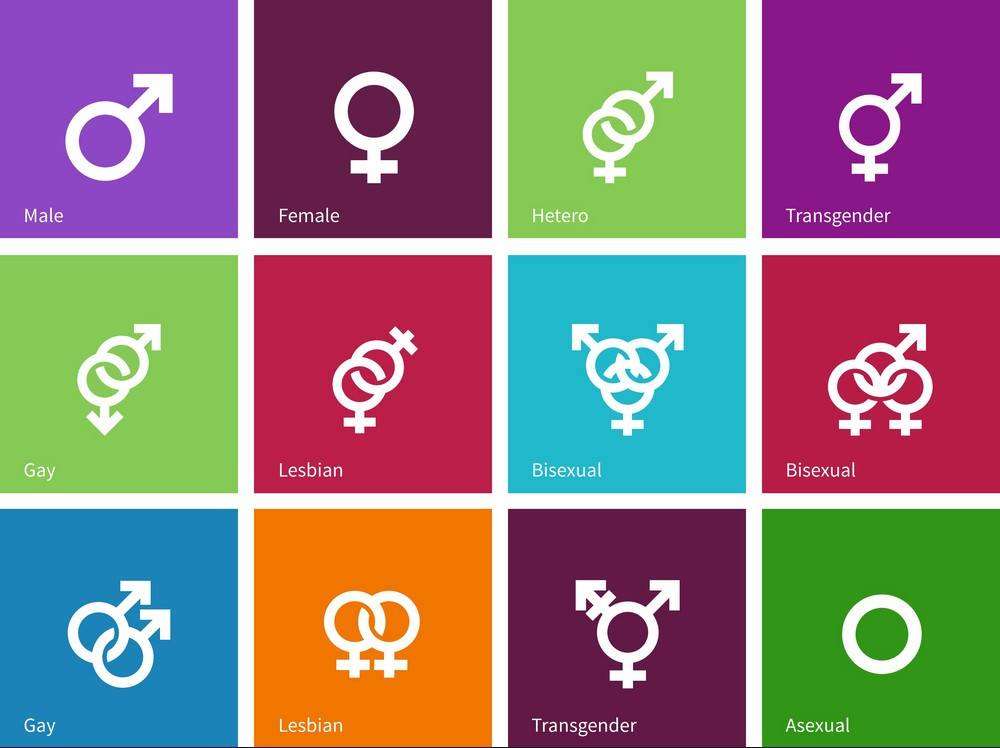Do You Know Your Sexuality? Phenomenon And Orientation
Which terms describe your sexual attraction, biological phenomenon, and orientation?
Recently, non-binary gender identities and homosexuality have gained visibility in the media. As a result, there are increasing LGBTQIA2S+ associations. Nevertheless, there are still countries where people often are excluded, despised, mocked, and even condemned.
Whereas in Canada, there is the freedom to choose a sexual identity. Initiatives to fight for the acceptance of the LGBTQIA2S+ community have created federal laws. In 1996, it was illegal to isolate someone because of their sexual orientation, and it received recognition in the constitution in 1998. That has led to the right to same-sex marriages throughout the country since 2005.
Sexuality, or sexual orientation, is about people’s identity about the gender or genders to which they are attracted, either sexually or romantically.
Why does it matter?
Your sexual or romantic partner doesn’t define your identity. Sexuality, being fluid, can change in different circumstances or over time. Therefore, those may identify more with one sexuality than another at different times.

Below are the 52 shades (definitions) of sexuality, biological phenomenon, and some sexual orientations in alphabetical order.
- Alloromantic: Those who identify as alloromantic experience romantic attraction toward others.
- Allosexism: This term refers to societal norms, stereotypes, and practices that operate under the assumption that all human beings experience or should experience sexual attraction. Allosexism grants privilege to those who experience attraction and leads to prejudice against and the erasure of asexual people.
- Allosexual: This is an umbrella term for those who feel sexual attraction toward other people. People with this orientation may identify with another sexuality, such as gay, lesbian, or bisexual.
- Androsexual: Those who consider themselves androsexual feel attraction toward men, males, or perceived masculinity, irrespective of whether they were assigned male at birth.
- Aromantic: Those who may not feel romantic attraction toward anyone. They may only want a relationship within the friendship. Those who identify with this orientation may also identify with another orientation. Romantic attraction can differ from sexual attraction. For example, those may not feel romantic attraction toward people but may still be sexually attracted to some individuals.
- Asexual: Those with no or less romantic or sexual attraction to others. Those who identify as asexual do not experience sexual attraction but may engage in sexual activity, either as masturbation or with a partner. Asexual is an umbrella term encompassing a broad range of sexual orientations. Within the Asexuality spectrum, some people may experience no sexual or romantic attraction toward anyone, while others may experience varying sexual or romantic interests. Those who identify with this orientation do not have to abstain from sex to be asexual. Some orientations that exist within the asexuality spectrum include:
- Sex-averse: Those who are averse to or entirely disinterested in sex and sexual behavior.
- Sex-favorable: Those who have positive feelings toward sex in some situations.
- Sex-indifferent: Those who feel neutral about sex and sexual behavior.
- Sex-repulsed: Those who feel repulsed by sex and sexual behavior.
- Autoromantic: Those who experience a romantic relationship with themselves and consider their relationship with themselves as one where they both give and receive love.
- Autosexual: Those who feel intense sexual attraction to themselves.
- Bicurious: Those interested in having a sexual or romantic experience with someone of the same gender. The term indicates that the person experiences some uncertainty as to whether they identify romantically or sexually.
- Biromantic: Those who identify as biromantic feel romantic, but not necessarily sexual, attraction toward more than one gender.
- Bisexual: Those who identify as bisexual can be of any gender attracted toward anyone regardless of their gender.
- Celibate: Celibacy is the state of voluntarily being unmarried, sexually abstinent, or both, usually for religious reasons. It is often associated with the role of a religious official or devotee.
- Comet: This is a long-distance relationship where the partners only meet in person rarely but are happy to pick up their connection at those times and be less intensely in touch in between, like a comet passing close enough for the Earth to see every few years.
- Cupiosexual: Those who do not experience sexual attraction but still desire to engage in sexual behavior or have a sexual relationship.
- Demiromantic: Those who usually do not feel romantic attraction toward people with whom they do not have a strong emotional bond.
- Demisexual/Sapiosexuality: Those who only feel sexual attraction toward someone with whom they have already established a strong emotional bond. A Sapio is attracted to intelligence or the other person’s mind. Here, the emotional bond is not a crucial factor. The authors of a recent study that investigated whether IQ specifically was the most attractive trait for sapiosexuals concluded that it was not the most critical factor. According to the findings of this study, emotional intelligence seemed to be more important than objective intelligence, which is what an IQ test measures.
- Ethical Non-Monogamy (ENM, AKA CNM – Consensual Non-Monogamy) – A committed romantic relationship wherein all partners consent to sexual and/or romantic encounters with other consenting individuals.
- Gay/Homosexual: Those who are attracted to the same sex or gender. Those who identify as gay only feel sexual attraction toward people of the same gender. Socially, people use this term to refer to men who are romantically and sexually attracted to men. However, those in the community use it as an umbrella term.
- Gray Sexual: Those who experience sexual attraction either infrequently or not very intensely.
- Gray-Asexuality: Gray-a or Gray Asexuality, like demisexuality, is on the asexual spectrum. Unlike demisexuality, those who identify as Gray-a experience infrequent or less intense sexual attraction or desire to engage in sexual activities.
- Gray-Romantic: Those who may experience romantic attraction either rarely or not very strongly.
- Gynesexual/Gynosexual: Those who feel sexual attraction toward women, females, and perceived femininity, irrespective of whether they were assigned female at birth.
- Heteroromantic: Those who may experience romantic attraction, but not necessarily sexual attraction, toward those of a different gender.
- Heterosexual/Straight. Those who are romantically and physically attracted to members of the opposite sex.
- Homoromantic: Those who are romantically attracted to those of a similar gender. They may not feel sexual attraction toward these people, in any case.
- Hyposexual: Those who may show no sex drive or interest in sexual activity.
- Hypersexual: Those who may be compulsively obsessed with it.
- Lap-Sitting Poly: You’re expected to be comfortable enough to sit at the kitchen table with your metamours and sit on their lap (either as a best friend or a lover).
- Lesbian: Those who identify as lesbian are usually women who feel sexual and romantic attraction toward other women. Some nonbinary people — those who do not identify with the traditional binary sexes of male and female — may also identify as lesbians. This may be because they feel closer to womanhood and are mainly attracted to women.
- Libidoist Asexual: This term refers to those who identify asexual but experience sexual feelings that they can satisfy with masturbation or self-stimulation.
- Limerence: It is a state of infatuation or obsession with another person that involves an all-consuming passion and intrusive thoughts.
- Love Bomb: Those who overwhelm you with loving words, actions, and behavior as a manipulation technique.
- Metamour: In a polyamorous relationship, one’s partner’s partner with whom one is not directly involved.
- Monosexual: This umbrella term encompasses all sexual orientations that feel a romantic or sexual attraction toward only one gender.
- Multisexual: Those attracted to more than one gender; it is a broad term that encompasses all sexual orientations.
- Nesting Partner: Those polyamorous who may choose to have nesting partners (persons they live with) or primary partners. Sometimes, the primary relationship partners may practice hierarchal polyamory. Hierarchal polyamory means that partners may place more importance on certain relationships than others.
- New Relationship Energy (NRE): Those who have a strong emotional, physical, and sexual response toward someone when you are in a new relationship with them. It starts from initial attraction and lasts from three months to a year.
- Panromantic: Those who experience romantic attraction, but not sexual attraction, toward people of any gender or sex.
- Pansexual/Omnisexual: Those who identify as sexually attracted to anyone, regardless of gender, sexual orientation, or sexual identity. In other words, those who may be more physically interested in females but still find that they are sexually attracted to some males.
- Polyamorous: Those with multiple loving, intentional, and intimate relationships simultaneously. Polyamory is an open or non-monogamous relationship that follows specific guidelines.
- Polysexual: Those who feel sexual or romantic attraction toward more than one gender.
- Queer: All sexualities under the LGBTQIA+ umbrella may also identify as queer.
- Sexually Fluid: People’s sexuality can be fluid (not fixed), and they may not define themselves by any sexuality.
- Skoliosexual/Scoliosexual: Those attracted to transgender or nonbinary.
- Solo Poly: Those open to having multiple intimate relationships with people but an independent or single lifestyle. They may not live with partners, share finances, or have the desire to reach traditional relationship milestones in which partners’ lives become more intertwined.
- Spectra Sexual: Those who are romantically and sexually attracted to multiple sexes, genders, and gender identities but not all of them.
- Swinging Pineapple: This symbolizes love for everyone regardless of gender. The perfect design for those who are polyamorous, intersex, transitioning, or identify themselves as having an affinity to everyone, neutral or undefined gender.
- Temporary Lack of Libido: A libido drop later in life is often not the same as being of asexual orientation. Common causes of low libido include mental health distress such as anxiety, stress, and depression, certain medications and supplements, underlying illness, steroid use, and hormonal changes and imbalances.
- Throuple/Triad/Closed Triad: It is a relationship between three people who unanimously agree to be in a romantic, loving relationship with the consent of all involved.
- Transitioning: It is the period during which a person begins to live according to their gender identity rather than the gender at birth. While intersex and gender people transition, many do at some point.
- Two Spirit: Those males, females, and sometimes intersexed individuals who combined activities of both men and women with traits unique to their status as two-spirit people.
- Unicorn/Dragon: A bisexual/polyamorous is open to forming a triad with an established couple, referred to as these mythical creatures, because these types of partners are scarce. A unicorn is those who are willing to join an existing couple. They may join the couple only for sex, become more involved in the relationship, and spend nonsexual, companionship time together. This description uses the word because unicorns are rare, mythical, and hard-to-find creatures.
As researcher Mere Abrams says, the bottom line is, “It’s OK to feel unsure or overwhelmed by all the terms we now have to describe sexual and romantic orientation, attraction, and behavior.” However, expanding our language to describe our sexuality can provide guidance, validation, and access to community while on our journey of sexual self-discovery and satisfaction.
Conversations about sex, sexuality, and bodies with your children can help them understand and accept it as a healthy part of life. In addition, open and honest conversations when your child is young can make later conversations easier.
While there are volumes of in-depth research papers on this subject, this is a brief attempt to provide a glossary of commonly used words. There is an overlap between specific terms, for example, bisexuality and polysexuality, pansexual and omnisexual, gay and homosexual, etc. Some people may prefer to use one word over another. The idea is to understand sexual preferences clearly.
The universality of human rights and the inalienable nature of rights belonging to every person by being human is the foundation of the right to sexuality and freedom from discrimination on the grounds of sexual orientation.
#humanrights #sexuality #gender #sex #identity #sexualorientation #sexualbehaviour #50shadesofgrey #fiftyshadesofgrey #LGBTQIA2S #tusharunadkat
References:




